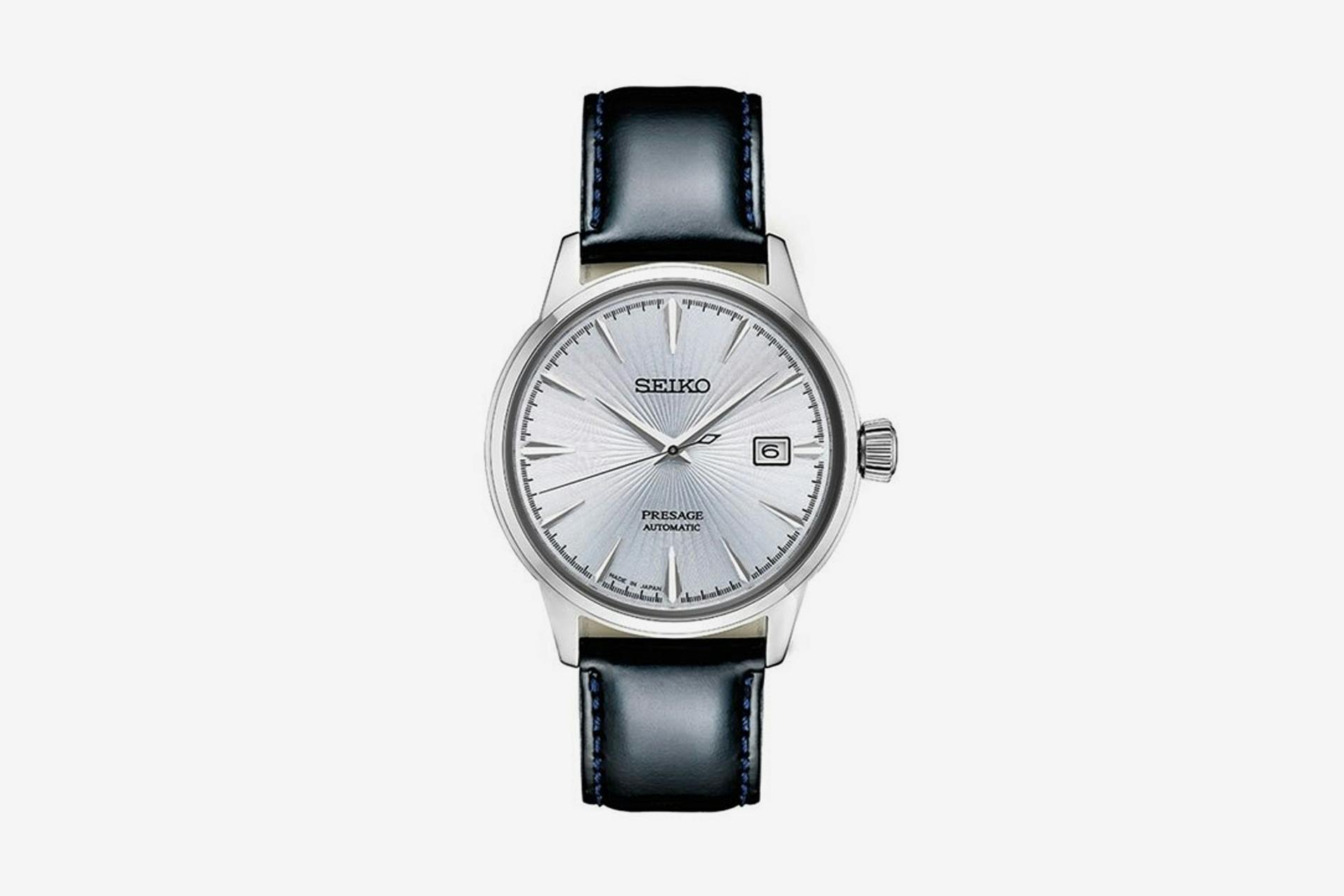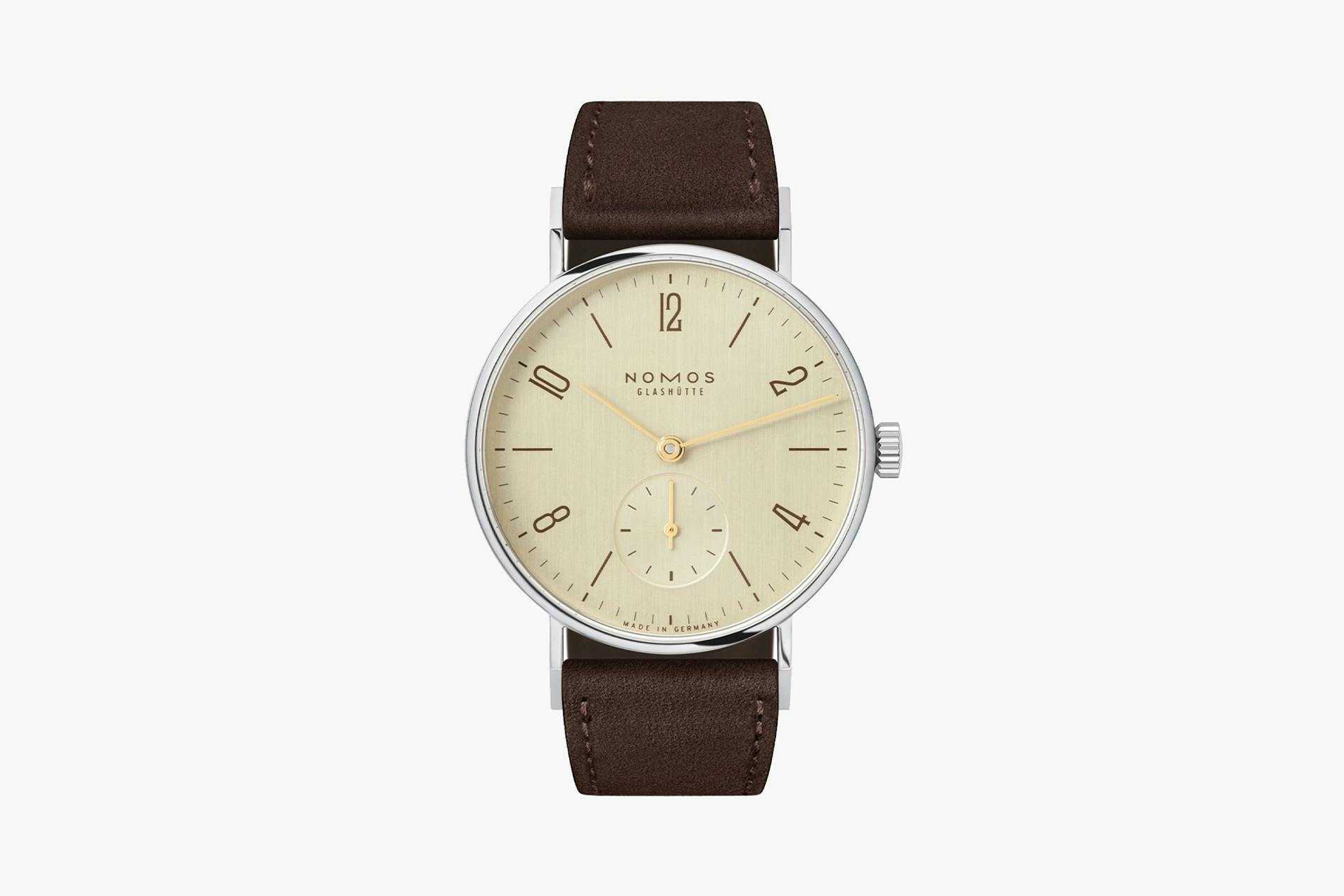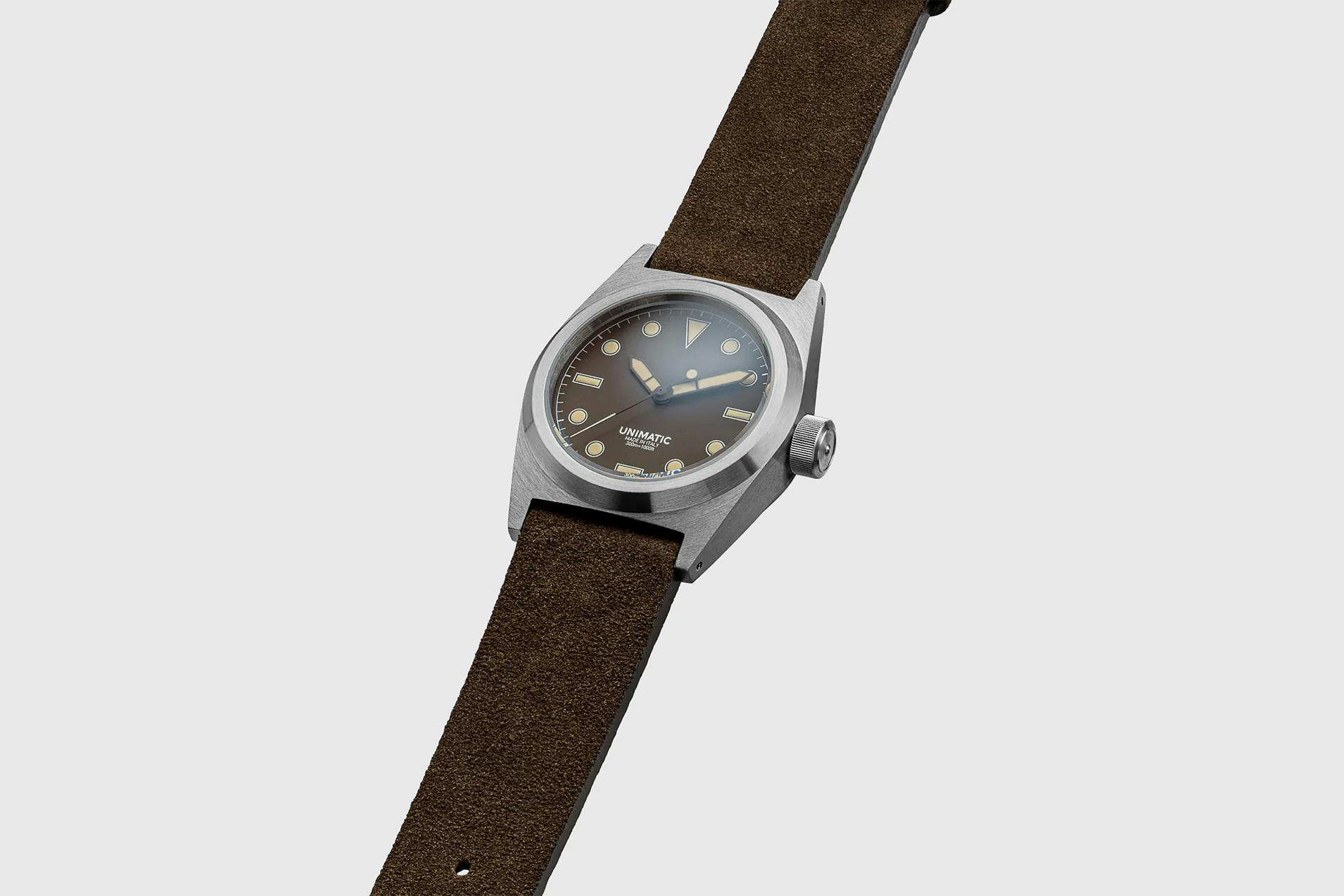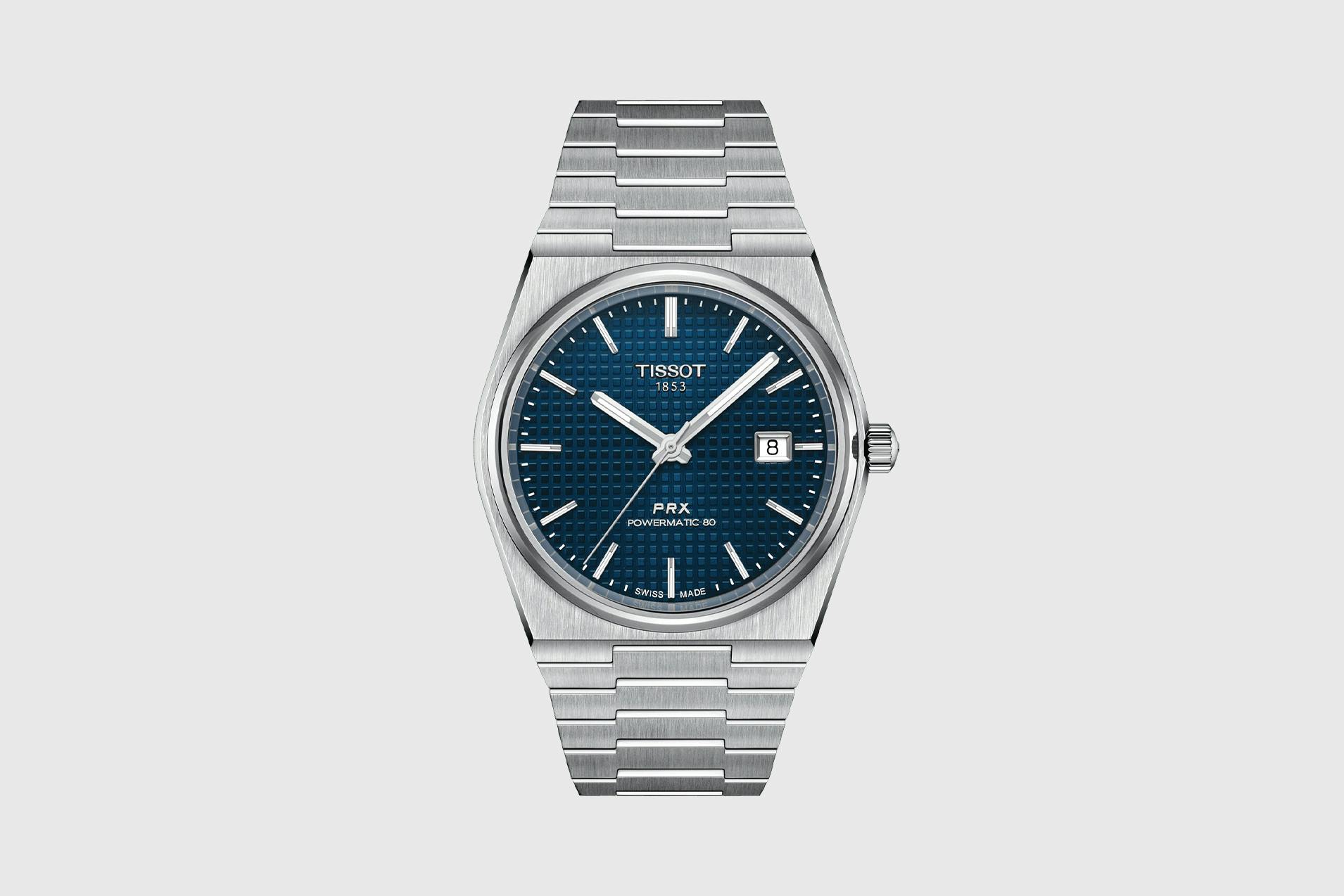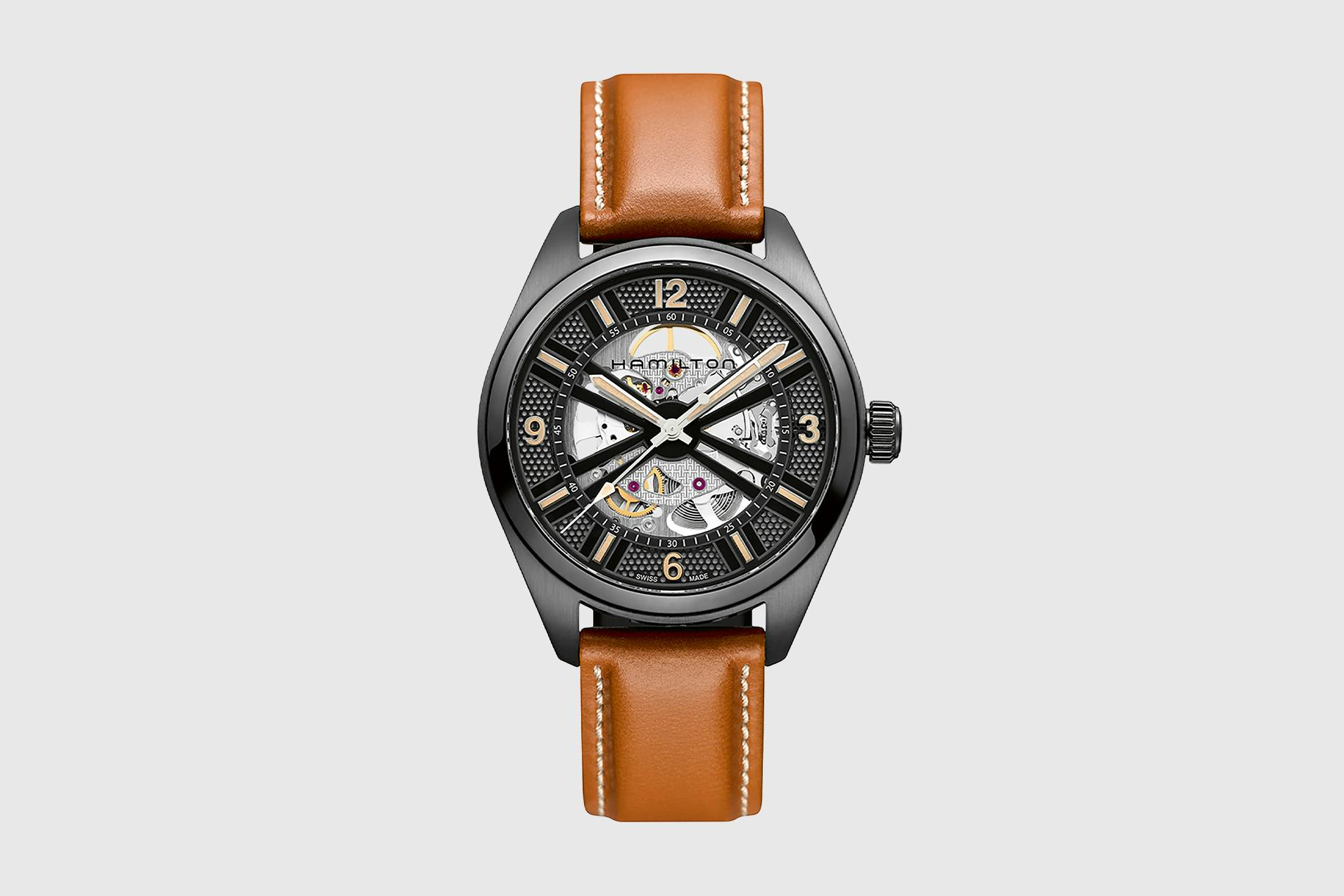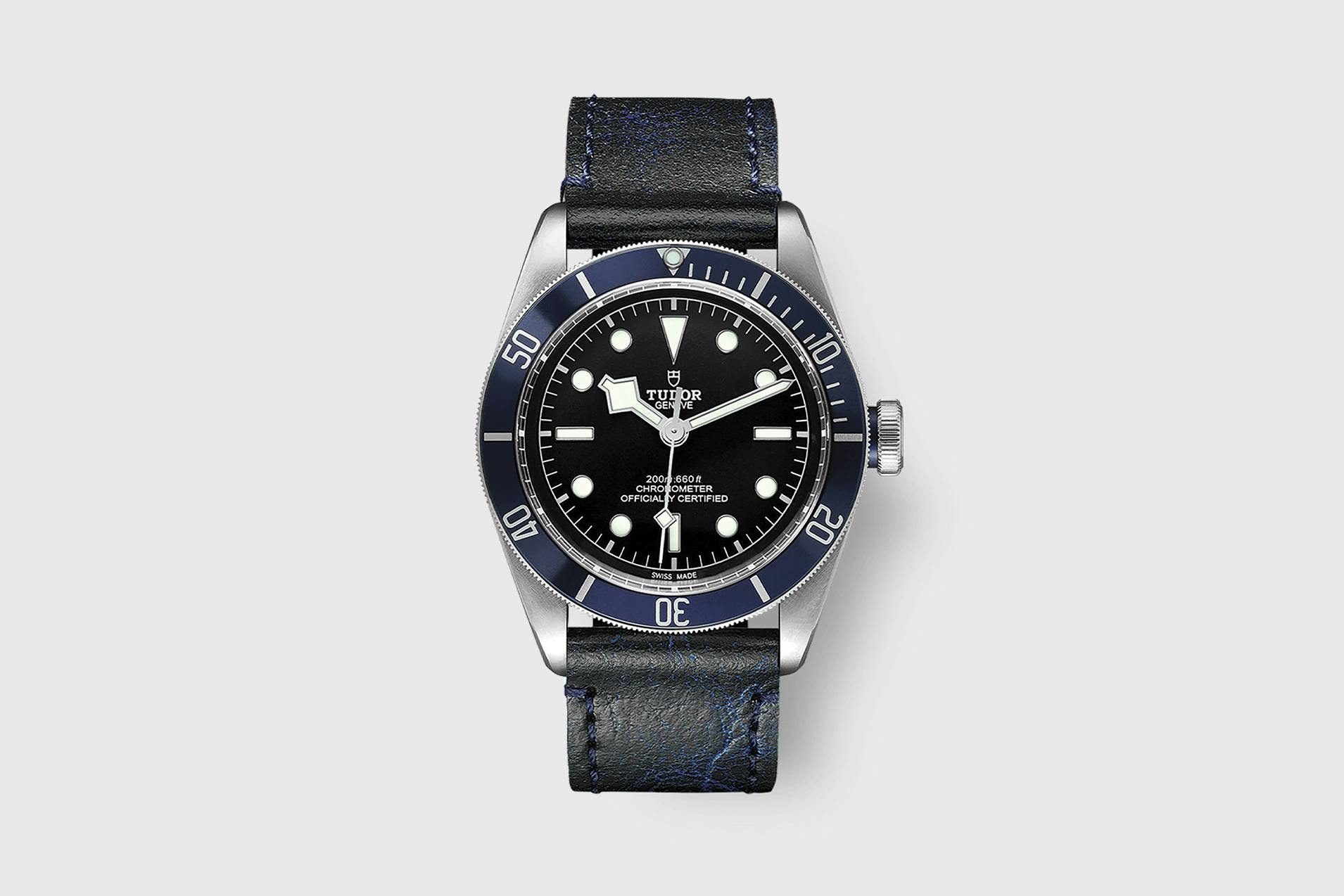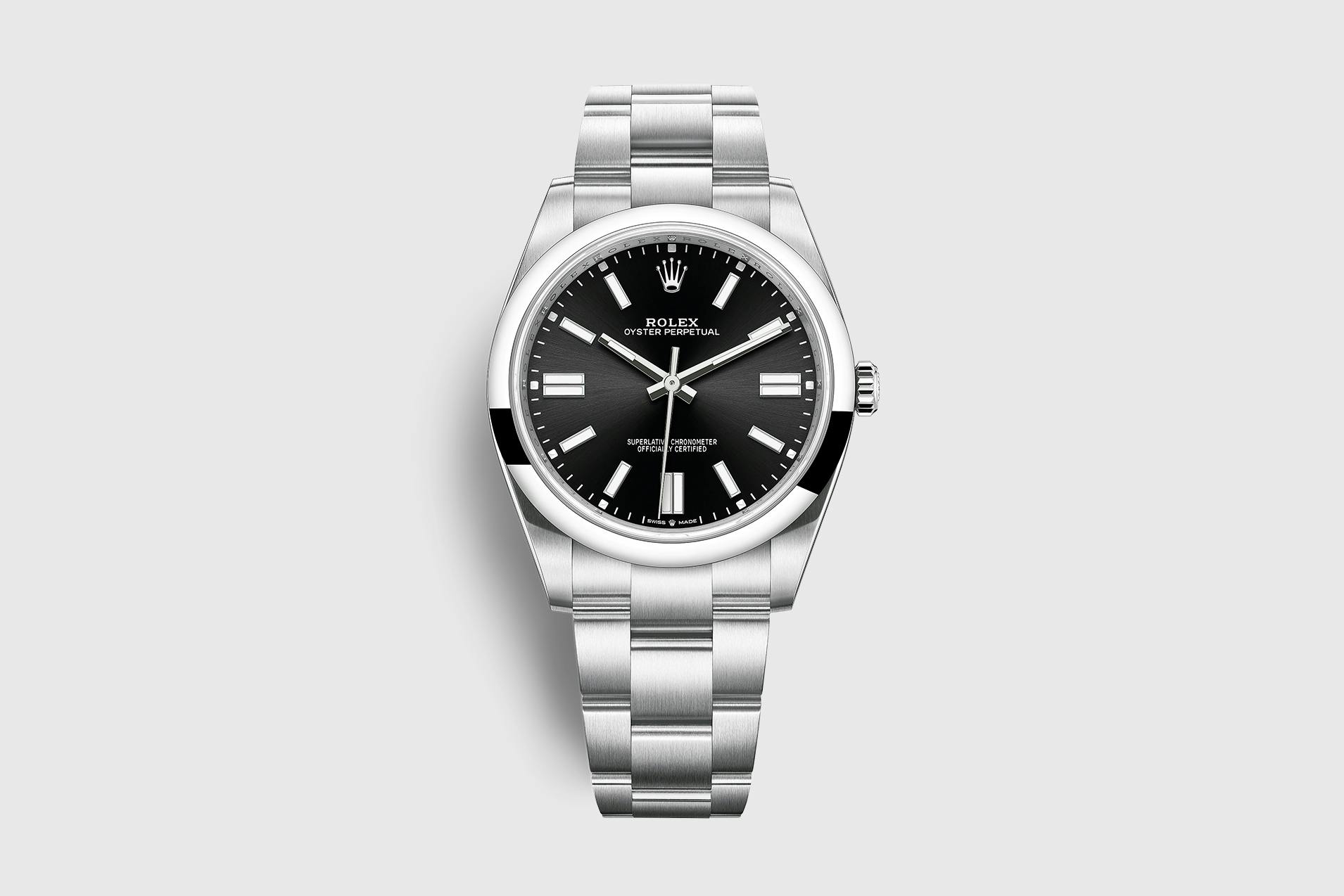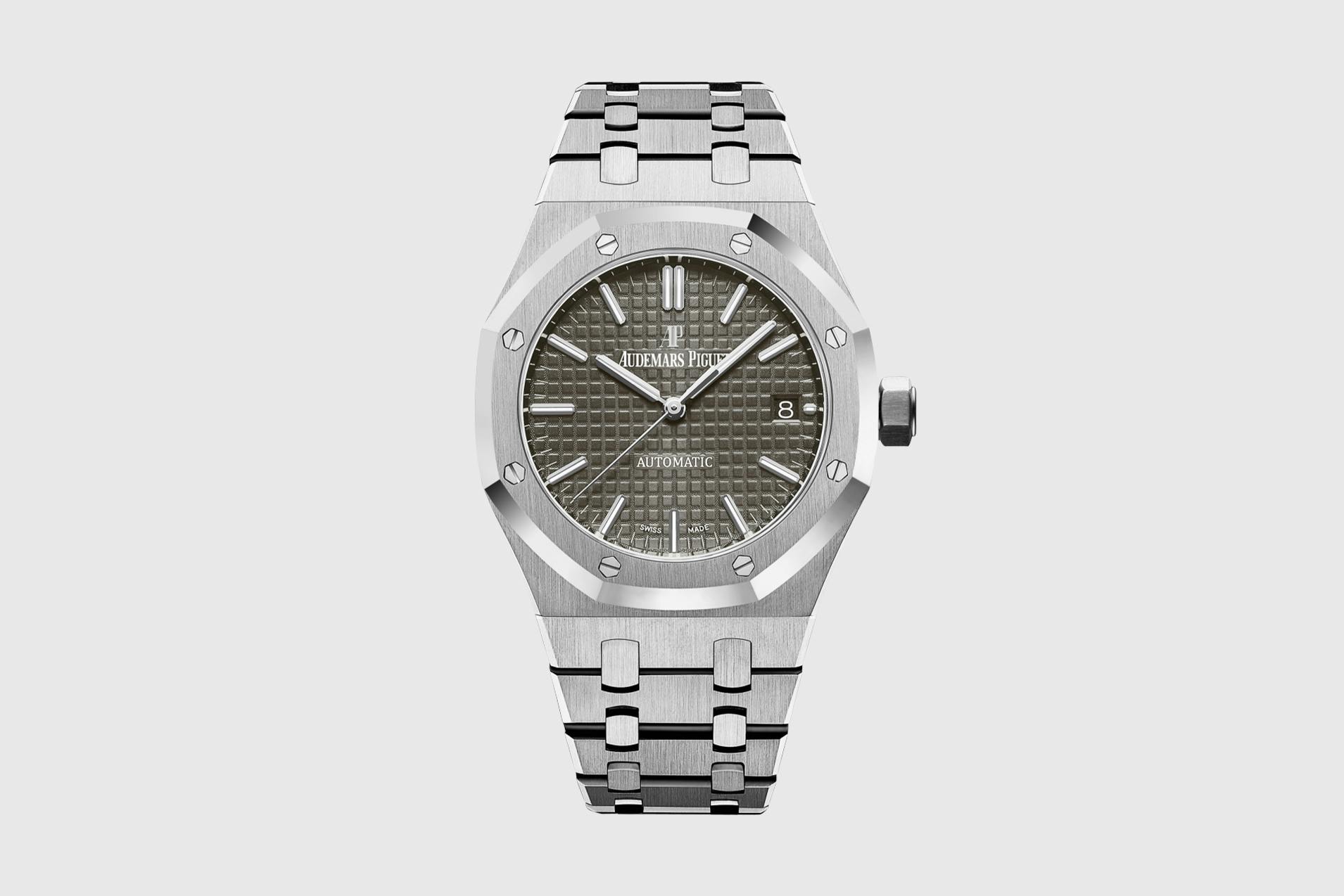Investing in a Solid Timepiece Shouldn't Be Scary in 2024
We get it. Researching, picking, and purchasing your first serious timepiece can be a daunting task. The whirlwind of terms, brands, and boutique options is often dizzying. Watch "enthusiasts" who throw out phrases like "brushed finishing," "tourbillon complication," and "lug-to-lug,” etc., in casual conversation, are not really doing much to demystify the world of watches either. But, selecting your first entry level luxury watch should be fun, far from a drag. The right timepiece can elevate your fit, be used to celebrate a milestone, become part of your legacy, or be a solid investment. At their best, watches can embody the pinnacle of storied craftsmanship and innovation with just the right mix of design, art, and engineering. But I digress.
The thing is, not all watches are made equal. Some watches are clearly worth their price, others not so much. Sure, you can walk right into your local Audemar, IWC, or Rolex boutique and just buy that new piece that caught your eye, but if you don’t choose wisely you’re going to lose your shirt.
Though picking a timepiece is subjective, there are a few general rules of thumb to keep in mind when purchasing a watch, no matter your budget. Besides, you don't want to end up on fakewatchbuster’s instagram for the wrong reasons.
The start to an ongoing watch series, today's guide will equip you with everything you need to know about watches, from their parts to what characteristics you should be on the lookout for when picking a timepiece. At the end, we will walk you through some of the best luxury watches for men at every price point. Picking a watch just got a little less stressful.
Watch 101: How to “speak watch”
Before we jump into the more exciting aspects of watches, you need to understand the basic components. If words like bezel, dial, crown, and lugs seem a bit foreign to you, we recommend starting here. Our diagram below will act as a key. The terms used here will be used to describe the watches featured in this article, helping you better "speak watch." Watch designs change and vary based on their functionality. We will address those changes as we encounter different pieces throughout the series.
A. Crown - That knob protruding from your case is dubbed the crown. It's your watch's command center, allowing you to set your watch's time, day, month, etc.
B. Case - The case of the watch is its body. It houses the mechanism in the watch that allows it to function. Watch cases can be made of plastic, metal ceramic, gold, platinum, and silver. There are even instances in which cases are 3D printed.
C. Bezel - In its simplest form, the bezel is the outer ring of a watch, holding the case crystal in place. More complicated bezels can be functional, serving a specific purpose, like on a diver watch. Other bezels may be used for decorative purposes by adding precious stones to the component.
D. Crystal - Though not always made of "crystal," this component protects the face of your watch while giving you a front-row view to the dial, hands, and hour markers.
E. Dial - Consisting of the hands, and hour marker of the watch, here the watch displays the time. More complicated watch dials might show you the month, the moon phase, or even an image of the night sky.
F. Hour Hand/Minute Hand - This part of the watch simply tells you the time. Depending on the make, model, brand etc., the watch may not feature these at all.
G. Strap - Made from leather to ceramic, this part of your watch secures it to your wrist.
H. Movement/Case Back - Housed in the case, the movement of the watch is its engine, and just like cars, some engines are better than others. It powers the watch, dictating all its functions. You can usually get access or a glimpse of the movement via the case back.
The best watches don’t look like shit.
What makes a great watch? The answer is not as complicated as you may think. Across the board, there are specific characteristics that you need to pay attention to when selecting a timepiece. But at its core, there’s only one question you should keep in mind — how much time, effort, and money has gone into producing the watch? If you are looking at a watch and feel as if you could buy the case, movement, and strap from a sketchy third party, you’re going to have a bad time. If an influencer is trying to get you to buy the watch, you’re going to have a bad time. If you bought an iced out watch from a jeweler, you are going to have a bad time. You get the point.
Defining what makes a great watch will help you better understand if the watch will last for years to come or if the watch will retain its value. Here are some things to know.
What materials were used to make the watch?
First, pay attention to the watch’s material. From high-end heritage companies to consumer brands, most quality watches use 316L stainless steel in their case. Watchmakers on the higher-end of the spectrum may also use precious metals and even ceramic — materials that take a high level of craftsmanship to mold and shape. Watches made from cheap alloys and plastics won’t hold up for long. As for the crystal of your watch, most quality brands use sapphire glass because of its scratch resistance. Watches using mineral crystal, plexiglass, and plastic are not worth your time (get it?).
How was your watch finished?
Next, pay attention to the finish on the case of the watch — it is what gives a watch's surface its attractive appearance, contributing to a watch's shine, texture, and polish. Brands like Romain Gauthier are legendary for their reflective case finishes, commonly using multiple finishing techniques on their watches. The sharper the brushing and more transitions between different types of finishings on the case, generally the more time has gone into making the watch. Low-quality watches tend to use more generic case shapes, brushing, or polishing throughout their entirety.
Does your watchmaker care about the details?
Get up close and personal with the watch. Look at the watch's dial, hands, and hour markers. Watches like the Seiko Presage Cocktail Time have an eye-catching sunray dial that reflects light in every direction. Hands and hour markers on this timepiece are of excellent quality and look stunning under a macro lens. Poor watchmakers usually cut corners, ignoring the minute details of the watches, commonly featuring misaligned hour markers or text and even dirt under the crystal.
What are watch complications? Why should you care?
Finally, complications — any feature in the watch that does something other than telling time — can also hint at a watch’s build quality. Though internal mechanisms drive them, their functionality often appears on the dial of the watch. If a brand adds a day date, moon phase, annual calendar, etc., to a watch you are headed in the right direction. But, beware.
These complications are, well, complicated to produce in a watch and often take hundreds of hours to complete. If a brand tells you that they placed a tourbillon — a complication considered by many to be of the most challenging of watch mechanisms to make — in a watch that is only a few hundred dollars, somebody is probably lying. The A. Lange & Söhne 1815 Tourbillon will set you back $140,000 alone. Use discretion. If something seems too good to be true, it probably is.
What is the difference between quartz, mechanical & automatic watch movements?
Let’s not forget about the most crucial aspect of a watch, the movement. If you have an awesome-looking car but a shit engine you won’t get far. The movement of a watch will dictate the overall experience with the timepiece. A great watch movement can last for decades if properly taken care of. But, we are getting ahead of ourselves.
Watches come with three different types of movements, quartz, mechanical, and automatic. Quartz utilizes a battery as its primary power source and is typically the type of movement that you will find in your standard, no-frills watch. Timekeeping is regulated by a quartz crystal that vibrates at a certain frequency. Compared to their mechanical cousins, they are far more accurate and reliable when telling time.
The world of quartz watches gets a lot of slack because they are relatively easy and cheap to mass-produce, making these movements the go-to for fashion watch brands. However, don’t let watch enthusiasts convince you that quartz movements are bad. There are solid quartz watches out there like the Hamilton Khaki Field and Jaeger LeCoultre Reverso Classic.
Mechanical vs automatic watches
People who appreciate artistry and craftsmanship tend to lean towards mechanical and automatic watches. An interesting note, all automatic watches are mechanical, but not all mechanical watches are automatic.
Starting with mechanical watches, these are hand-wound timepieces that use hundreds or even thousands of tiny mechanical pieces to keep the watch running. Compared to a quartz watch, which may fail or break after a few decades, a mechanical watch can last generations if properly taken care of. If you are on the hunt for a conversation-starting mechanical watch be sure to check out the Junghans Max Bill minimal timepiece.
Finally, we have automatic watches. These movements don’t need to be hand-wound. Automatic watches use the daily movement of your wrist to keep themselves powered even after you’ve taken them off your wrists, lasting 8-72+ hours after you put them on your bed table.
Both mechanical and automatic watches tend to be far more expensive than their quartz counterparts because of the level of engineering and man-hours needed to create these movements.
What is the difference between in-house movements vs third-party movements
When selecting a watch, you should fully be aware of the type of movement used in the watch. Very few brands make their own in-house movements, relying on third parties, like the Swiss movement maker ETA, to design their “watch engines”. This is not necessarily a bad thing. Standing for ETA SA Manufacture Horlogère Suisse, the Switzerland-based company produces quartz movements, hand-wound, and self-winding mechanical movements for watchmakers like Omega, Longines, Tissot, Tudor, and Sinn.
A lot of ETA’s movements are legendary, powering some of the world’s most iconic watches like the Tudor Black Bay. Watchmakers may come to a third-party manufacturer for a select line of watches and then create their own in-house movements for their higher-end timepieces. However, a third-party movement does not mean a drop-off in quality. As for choosing an in-house movement vs. a third-party movement, the choice is really up to you.
Purists will tell you in-house is the only way to go. The good news is that most watch brands are transparent about their movements. Simply researching the movement can help you decide if what you are paying for is worth the price.
No one cares about the price of your watch or your brand.
Let me let you in on a secret. No one is going to stop you on the street and ask you where you got that watch or how much you paid for it. If that happens, you're probably about to get robbed. Yes, you may get a few clout points and a few extra likes on the gram for wearing a big name brand, but don't expect much more than that. How much you spend on a watch shouldn't be a point of prestige when purchasing a timepiece. For many watch enthusiasts, price is just a barrier of entry to get the piece that they want. One of the most exciting aspects of the world of watches is that there are excellent options at just about every price point.
Watches like the Tissot PRX that cost $650 could easily go toe-to-toe with watches 2-3x its price, thanks to its beautiful case finishing, detailed dial, and movement. If you're a fan of Casio, its $70 Vintage Retro Gold Digital watch is considered a god-tier among even the most seasoned collector's because of its price, nostalgic value, and reliability. And, if you have tens of thousands of dollars burning a hole in your pocket, Patek Philippe has a range of watches for you.
Picking the right watch is a balancing act between build quality, watch performance, design, price, and what you personally value in a timepiece. If you want a watch with a flawless build, its own in-house movement, and have an eye for heritage brands, prepare to pay a premium. If you simply like the design of a specific watch, like the look of the Rolex Submariner but don't want to pay Rolex prices, brands like Vague Watch Co are a great place to start.
The trick is using what you know to be true about great watches and simply pick whatever the hell you like. At the end of the day, you are investing in a watch for yourself. Just make sure whatever decision you make is an educated one.
But, don’t be afraid to invest in a big-name brand.
Taking all of that into account, do not shy away from the big-name brands. Considered the holy trinity in the watch world, Audemars Piguet, Vacheron Constantin, and Patek Philippe have hundreds of years of impeccable watchmaking, exciting inventions, and flawless design under their belt. They know what they are doing. Going to big-name brands like these will serve well in the long term protecting, maybe even doubling, your investment. If you had bought a Rolex Submariner at retail for $5,700 in 2014, that same watch would have been worth closer to $10,000+ today.
The truth is that watches from these heritage brands will almost always retain their value, thanks to a combination of craftsmanship and recognition. And, fashion watches as well as those hideous watches that your favorite influencer loves to promote, will always depreciate... drastically. Even if it takes a few years of saving, coping with a big name brand can be worth the investment.
How should a watch fit?
Unless you are trying to go for the Slick Rick The Ruler-look, take the time to understand what watch case size looks best on you. Generally, the diameter of a men's watch ranges from 38mm to 46mm. Anything below that range or above that range can look ridiculously small or massively large. To get started, find a tape measure and wrap it around your wrist. If your wrist is between 14cm and 18cm, get yourself a small to medium watch — 38mm-42mm is a good range. If you have a wrist larger than 18cm, you'll want to pick up a more oversized watch, ranging between 44-46mm.
You should also consider the thickness and material of the watch. Watches can be anywhere from 7mm-9mm or more, made in everything from titanium to white gold. You don't want to be lugging around heavy timepieces all day; trust me, your arm will get tired. Familiarize yourself with how different watch materials wear on your wrist and when you can try to avoid going above 8mm in thickness.
Now that you have made it through our general crash course, it is time to take a look at some of the best watches for beginners. Including brands like Cartier, Tissot, and Seiko, all of these watches match the criteria mentioned above at varying price points.
Shop the best luxury watches for men below.
Casio – GM-2100-1AER Black/Silver
You will be hardpressed to find someone who does not like Casio's G-shock series in the watch community. For many, the G-Shock is a god-tier watch. Take a look at exhibit A above. The GM-2100 is made from a reinforced resin case unsusceptible to cold, heat, and other external influences. The watch is scratch resistant and sits on your wrist using a carbon fiber bracelet. Some of the watch's features include five alarms, a stop function, and an automatic calendar/ date. This is the type of watch you rock over on vacation and if the world is about to end.
Seiko Presage "Cocktail Time" Automatic Watch
Seiko's "Cocktail Time" series is one of my favorite dress watches to recommend to newbies collectors. If you don't know already, Seiko has built a reputation for producing affordable watches that punch way above their weight regarding quality and performance. For well under $500, this piece comes with beautiful intricate details and decent finishing across its 40.5 millimeter brightly polished stainless steel case. However, the biggest selling point is the watch's dial.
Created in collaboration with a famous bartender in Japan and dubbed the SSA343j1, the dial is designed to feel and look like a perfectly balanced drink. A sunburst dial, the component features hints of vibrant silver and blue capable of lighting up your wrist at the right light angle. It's the type of dial you'd expect to come across at a price point perhaps 2-3 times the watch's price point. This is an easy pick if you are looking to dip your toes into the realms of watches.
NOMOS Glashütte NOMOS Reference 126
People who stan NOMOS Glashütte tend to obsess over the label's ability to create beautifully minimalistic and functionally impressive watches without a mindnumbing price point. Focusing on the latter point, today's Tangente 33 karat, Reference 126, comes with its own in-house build manual caliber called Alpha. Thanks to that engine, the watch has a 43-hour power reserve — which again is not something you see all that often at this price range. Pair that with 126's polished gold dial and dark velour strap, and you have a watch that you can keep coming back to, regardless of how big your watch collection gets.
UNIMATIC Modello Due U2S-MB
Unimatic designs watch that are both industrial but timelessly elegant. The brand is a brainchild of a bunch of watch nerds wanting to have access to affordable vintage and vintage-style watches. They've done just that, creating some of the fasting selling watch brands currently on the market. These aren't fashion watches, wrist pieces like today's Modello Due U2S-MB come equipped with a Selita SW-200-1 movement that provides frictionless performance with accuracy between +/- 12 to 30 seconds per day.
The movement sits in a 38.5mm case that offers the Field-style watch 300 meters of water resistance. If you are leaning towards a vintage watch but don't want the upkeep, Unimatic has got you covered. This special edition watch is limited to only 500 pieces.
Tissot PRX Powermatic 80
The PRX Powermatic is the pièce de résistance when it comes to watches under $1000. Tissot's flagship, PRX, is respected among both seasoned collectors and new watch enthusiasts. Why? The Swiss-made watch is not trying to be something that it's not, focusing on excelling in the areas it can. You won't find an in-house movement, but you will get a ETA 2824 workhorse with 80 hours of power reserve.
At $600-700, the watch delivers a water resistance of 100 meters in a 40mm stainless steel body with an iconic checkered blue dial. The watch looks fantastic on the wrist and can turn some heads when curious onlookers notice the build quality. This is one of those watches you just have to try on in the store to get the full appeal of the watch. No, this watch cannot go toe to toe with an Audemar Royal Oak. Nonetheless, this is one of the watches that I will always recommend to people new to the watch world.
Hamilton Skeleton Auto
Hamilton offers a lot of decently built skeleton watches. Nonetheless, the Khaki Skeleton seems to be one of the more purposefully built watches from the label's ever-growing list of parallel designs. The honeycomb multi-level dial looks great with the skeletonized feature — a window that gives the wearer a front row look at the timepiece's movement. The PVD Black coating looks fantastic with the brown cow-leather strap.
Tudor Black Bay
Tudor's Black Bay series is another beloved starter watch in the community, with some going as far as to say it could compete with a Rolex Submariner or Omega Seamaster 300. I wouldn't say all that it, but the Black Bay is up there. Tudor is the sister brand of Rolex, offering interested shoppers watches that give the user more bang for their buck. Sure, a Tudor Black Bay will set you back $3k+, but Rolex of the same class will cost well over $12,000 if you are lucky enough to get your hands on one.
The Tudor has its own in-house movement with an incredible 70 hours of power reserve. The watch comes in a 41 mm package, less flashy and more reserved than its Submariner sister. The Black Bay is a watch that you can keep on coming back to, thanks to its flawless details across its finished case, dial, and case back. This is the type of watch you can pull out every day with any fit and not get bored of it.
Rolex Oyster Perpetual
Though this watch is almost damn near impossible to get, this is still one of Rolex's best-values timepieces and arguably one of the most important watches in watch history. It started the trend of $5,000 entry watches across the industry — a standard practice among the biggest watchmakers. The Oyster Perpetual is beloved because of its contradicting nature. The watch Oyster Perpetual is Rolex's flagship — a brand synonymous with the highest levels of luxury. But the watch itself is understated and extremely simple. The watch feature a smooth polished bezel, dateless dial, and simple snap-fit clasp.
There is no ceramic bezel, over-the-top water- resistance or skeletonized features here. It's just a simple stainless steel watch with a historic and slightly old-school movement that will run for decades. And, have you ever seen a Rolex in person? The finishing watch is nothing like you've seen before. Dubbed Oystersteel, the steel alloy is specific to Rolex. Regarding anti-corrosion properties and overall look, Oystersteel is comparable to some precious materials. Overall, I still firmly believe this is one of the best watches you can buy at this price point. It's a watch that carries so much history. For me, that's what makes a watch special. Also, there is a solid chance that these watches will continue to rise in value if that's your thing.
Audemars Piguet Royal Oak Watch
Yes, the Royal Oak is still very much part of the meta. Next to Patek and Richard Mille, the Audemar is probably one of the most referenced watches in the past decade. Is it a watch that matches its hype? Maybe. It is probably one of the most copied watch designs in history, which is funny when you look back at the historical context. The AP's industrial, almost brutalist look was scoffed at when it originally appeared on the market.
Those exposed screws were a big no-no. But now everyone wants a piece of this watch. The movement is next level, finishing immaculate, and in my opinion, is one of the best-designed watches on today's list. It's another historic timepiece worth your time if you can dish out the coin. Just like Rolex, my biggest beef with this watch is the availability — a factor that drives up the aftermarket to dizzying levels.
Eager to check out the latest and greatest in the watch world? Be sure to stop by our Highsnobiety Watch Guide or pick up a few watches in our Highsnobiety shop. In the meantime, have you seen Rolex's 2024 novelties or the best watches from Watches and Wonders 2024?




